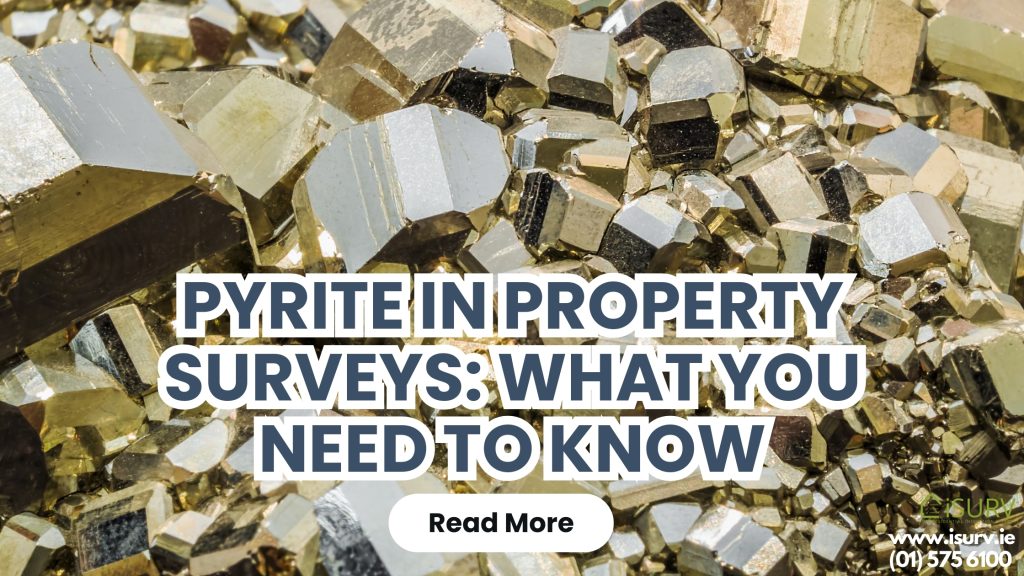
Pyrite, often referred to as “fool’s gold” due to its metallic lustre, is a common naturally occurring mineral. While it may seem harmless, its presence in construction materials can lead to significant structural issues if not properly managed.
What is Pyrite?
Pyrite is a naturally occurring mineral that can be found in sedimentary rock used to make crushed stone for backfill in construction. When the proportion of pyrite in the stone remains below a certain threshold, it poses no problem. However, if the pyrite content is higher, it can lead to serious issues. Pyrite first gained attention in the construction industry in 2007 when it was linked to structural problems originating from a single quarry in Ireland. Properties built before this time are unlikely to be affected by pyrite.
Why is Pyrite an Issue?
In the presence of moisture and oxygen, pyrite undergoes oxidation, producing sulphuric acid. This acid reacts with calcium carbonates, such as limestone, found in the crushed stone. The resulting chemical reaction produces sulphate, which can form gypsum. As gypsum crystallises, it causes the stone to burst and the backfill to swell, leading to the crumbling and swelling of concrete. This expansion puts pressure on concrete floors and foundations, potentially causing severe structural damage to a property.
How to Check for Pyrite?
During a typical survey, we check for signs that might indicate the presence of pyrite, such as cracking or floor heave. However, there’s a distinction between checking for signs of pyrite and testing for it. If pyrite damage is suspected, the next step involves taking a core sample from beneath the floor for testing to confirm its presence.
Identifying Pyrite Damage
There are several common defects associated with pyrite in construction materials. While no single defect definitively indicates the presence of pyrite, a combination of these can suggest pyrite-related issues:
- Cracking: A ‘spiderweb’ pattern of cracks on a concrete floor, or star- or cross-shaped cracks that gradually spread.
- Floor Heave: Bulging or rising of the floor, which may indicate swelling of the backfill.
- Crystals: Needle-like white crystals near cracks that disintegrate when touched.
- Wall Cracking: Bulging or horizontal cracking of external walls at a low level; horizontal cracking at ceiling level or vertical cracking above door openings.
- Load-Bearing Walls: More significant cracking in internal load-bearing walls resting on concrete that contains pyrite.
- Sticking Doors: Internal doors that stick or become jammed in an open or shut position.
- Sloping Surfaces: Kitchen worktops or other internal surfaces that slope unexpectedly.
Repairing Pyrite Damage
Repairing pyrite damage involves significant work:
- Floor Removal: The concrete ground floor of the property of the affected areas will need to be removed, along with the pyrite-contaminated fill. The floor will then be reinstated with new fill, damp proof membranes, radon barriers, and other necessary materials.
- Professional Supervision: The work must be carefully specified, properly supervised, and carried out under the guidance of a suitably qualified professional.
- Cost Considerations: The cost to rectify pyrite damage can typically be around €30,000, though this depends on factors such as internal finishes, house size, and layout.
If you suspect pyrite in your property or need further advice, visit www.isurv.ie or contact us at info@isurv.ie. We’re here to help you safeguard your home.

You’ve taken a complex idea and distilled it into something both clear and beautiful.
Good shout.